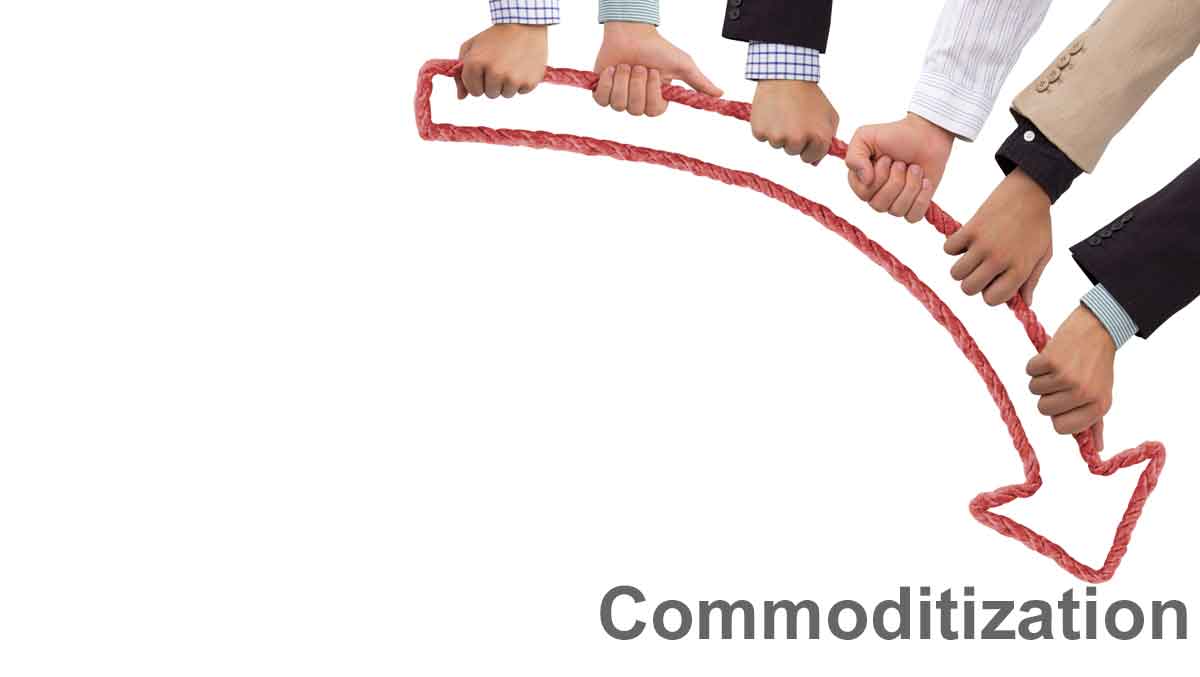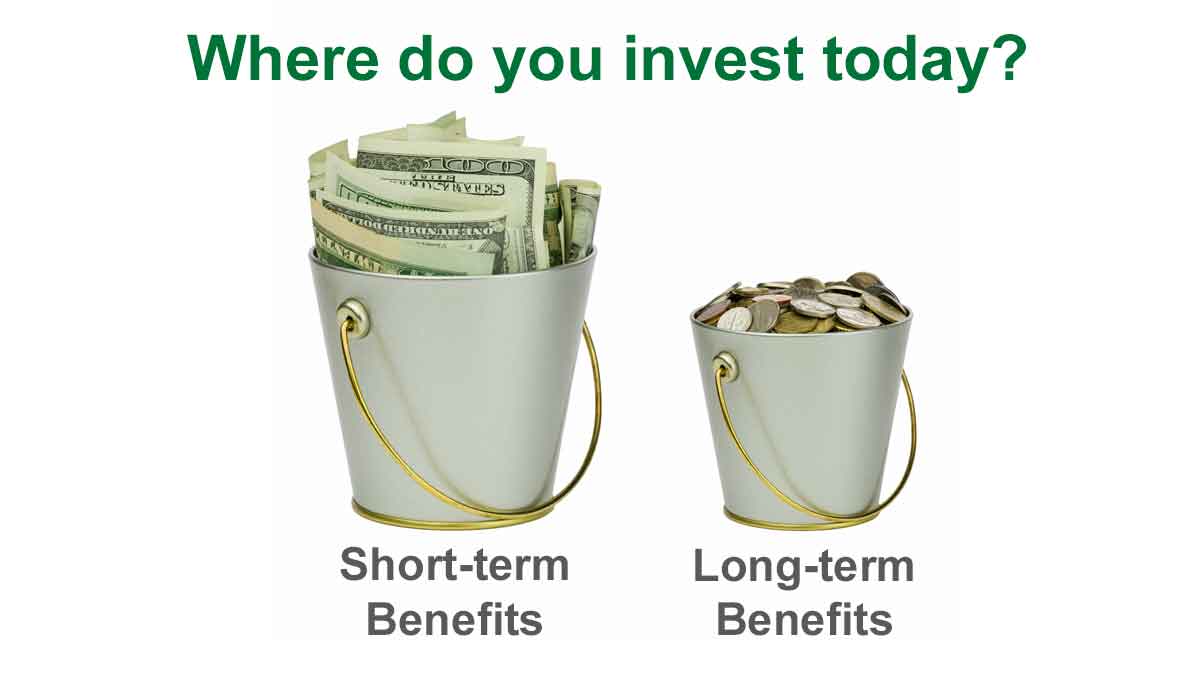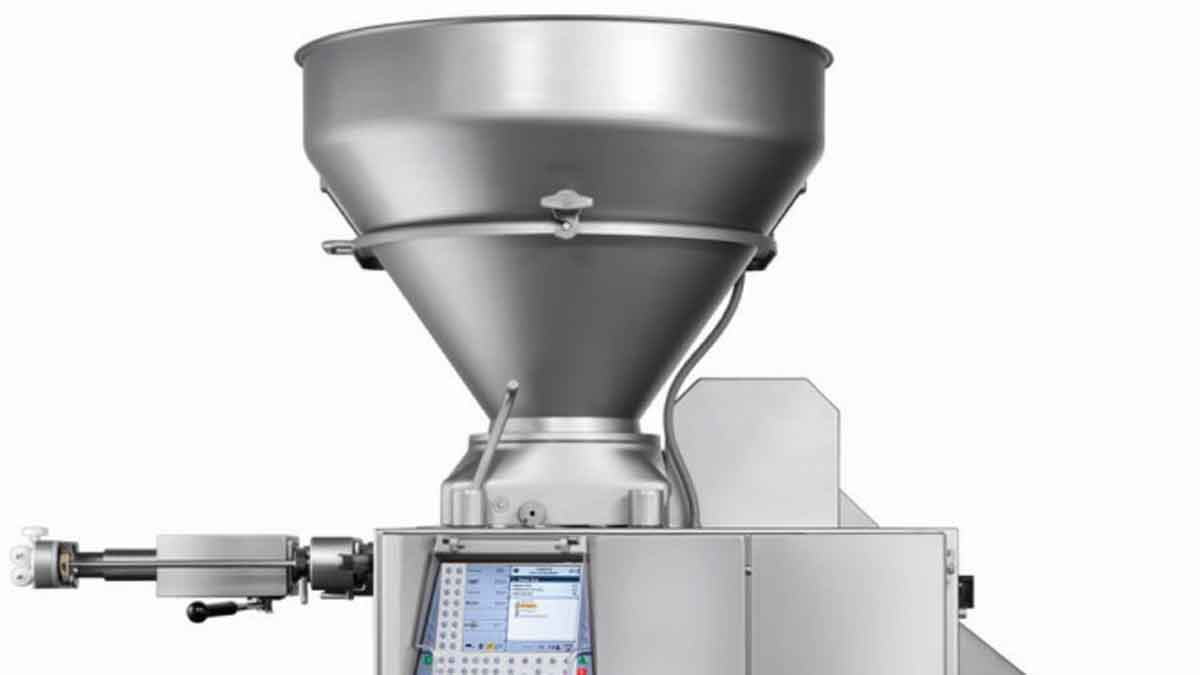There are many forces dragging your products toward commoditization: competitors trying to imitate your products… purchasing agents trying to standardize your products… new technologies trying to obsolete your products. In your quest toward specialty products, you’ll get no outside help. You own this one, baby.
More in article, The Commodity Death Spiral (Originally published in B2B Organic Growth newsletter).
Tell me to increase shareholder value and I struggle to identify something I can do as an employee to raise earnings per share. Tell me to understand and increase customer value, and I can think of a dozen things to do, most of them actionable, measurable, and beneficial to our bottom line. Many of these I will find inspiring… as will others.
More in article, Why Maximizing Shareholder Value is a Flawed Goal (Originally published in B2B Organic Growth newsletter).
All growth-oriented innovation starts with customer outcomes. This is what customers want to have happen, with no understanding yet of how it will happen. Nothing a company does can achieve profitable, sustainable growth unless customer value is created… which comes only by improving these outcomes.
More in white paper, Catch the Innovation Wave (page 8).
Your company’s only path to profitable, sustainable, organic growth is understanding and improving customers’ important, unmet outcomes. Today this “understanding” is your best competitive advantage, simply because most B2B suppliers have far less customer insight than they could.
More in white paper, Timing is Everything (page 3).
In a now-obscure 1972 HBR article, Richard Vancil complained long-term product development expenses were buried within annual operating plans… allowing short-sighted managers to raid them. Shocking, I know. Divide your budget into short-term and long-term benefit buckets. And make sure someone is guarding the long-term bucket.
More in article, The Commodity Death Spiral (Originally published in B2B Organic Growth newsletter).
When you turn up your thermostat, the temperature rises to the set point and quickly shuts off your furnace. Imagine if you had an 8-hour “feedback loop” before your furnace got the message. Even if you try new VOC approaches in the front end—but all your metrics occur after product launch—your feedback loop takes years. That’s no way to improve, is it?
More in article, 3 Problems with Innovation Metrics (Originally published in B2B Organic Growth Newsletter).
Imagine your business stopped innovating, your profits declined, and it is now budgeting time. To salvage next year, you’ll likely cut long-term costs, e.g. R&D or marketing, further reducing your ability to create high-value products. Next year, you’ll have even fewer options. This results in death or irrelevancy. If you’ve started this spiral, pull out quickly.
More in article, The Commodity Death Spiral (Originally published in B2B Organic Growth Newsletter).
Most financial business reviews are like standing around the output die, exhorting the extruder to do better. But nobody’s checking the feed hopper. It looks like an intelligent meeting, discussing gross margins, price increases and growth rates. But these were predetermined years earlier, largely by your new products, what you put into the feed hopper.
More in article, Are You a Builder or a Decorator?
The cathedral-builder has counted the cost in years and is willing to pay it to create something of enduring value. He recruits and apprentices the finest stone masons and wood carvers he can find. Because these craftsmen know the passion of the builder, they are secure in their employment, and they work with pride. Do you have such builders?
More in article, Are You a Builder or a Decorator?
Of course, employees will be laughing; they’ve heard this one before. When satisfying the expectations of Wall Street analysts conflicts with building the firm’s long-term competitive strength, guess which usually wins? Any employee who’s been through travel restrictions, investment delays, hiring freezes, etc. knows the answer.
More in article, Why Maximizing Shareholder Value is a Flawed Goal (Originally published in B2B Organic Growth Newsletter).
Some executives expect employees to deliver innovation-driven growth without investing in company-wide tools and skills. Either nothing changes, or employees run off changing things in random (Brownian) directions. Be intentional about what new behavior is needed, and take unwavering steps to drive it.
More in article, 3 Problems with Innovation Metrics (Originally published in B2B Organic Growth Newsletter).
Some leaders are Interior Decorators, trying to make the place look good every quarter… but not building anything. Others are Realtors. Their hearts are in buying and selling… reaping reward when the work of others’ hands changes hands. Others are Landlords, who apply themselves at work, but their hearts are elsewhere. Be a Builder if this is within you.
More in article, Are You a Builder or a Decorator?
If you see a business that has steadily grown over the years in size, profitability and stature… whose products have surpassed competitors’… that grinds through the hard work of delivering real customer value… that brushes aside fads, downturns and criticisms… look for the builder. If this is you, we can show you some power-tools for your next project.
More in article, Are You a Builder or a Decorator?
If a stock’s P/E ratio is 20-to-1, then only 5 percent of a firm’s value is driven by this year’s earnings. Put another way, 95 percent of shareholder value is driven by investors’ expectations of the future. Executives with rich stock options have “motive and opportunity” to manipulate these expectations… in ways that often damage the firm’s long-term health.
More in article, Why Maximizing Shareholder Value is a Flawed Goal (Originally published in B2B Organic Growth Newsletter).













